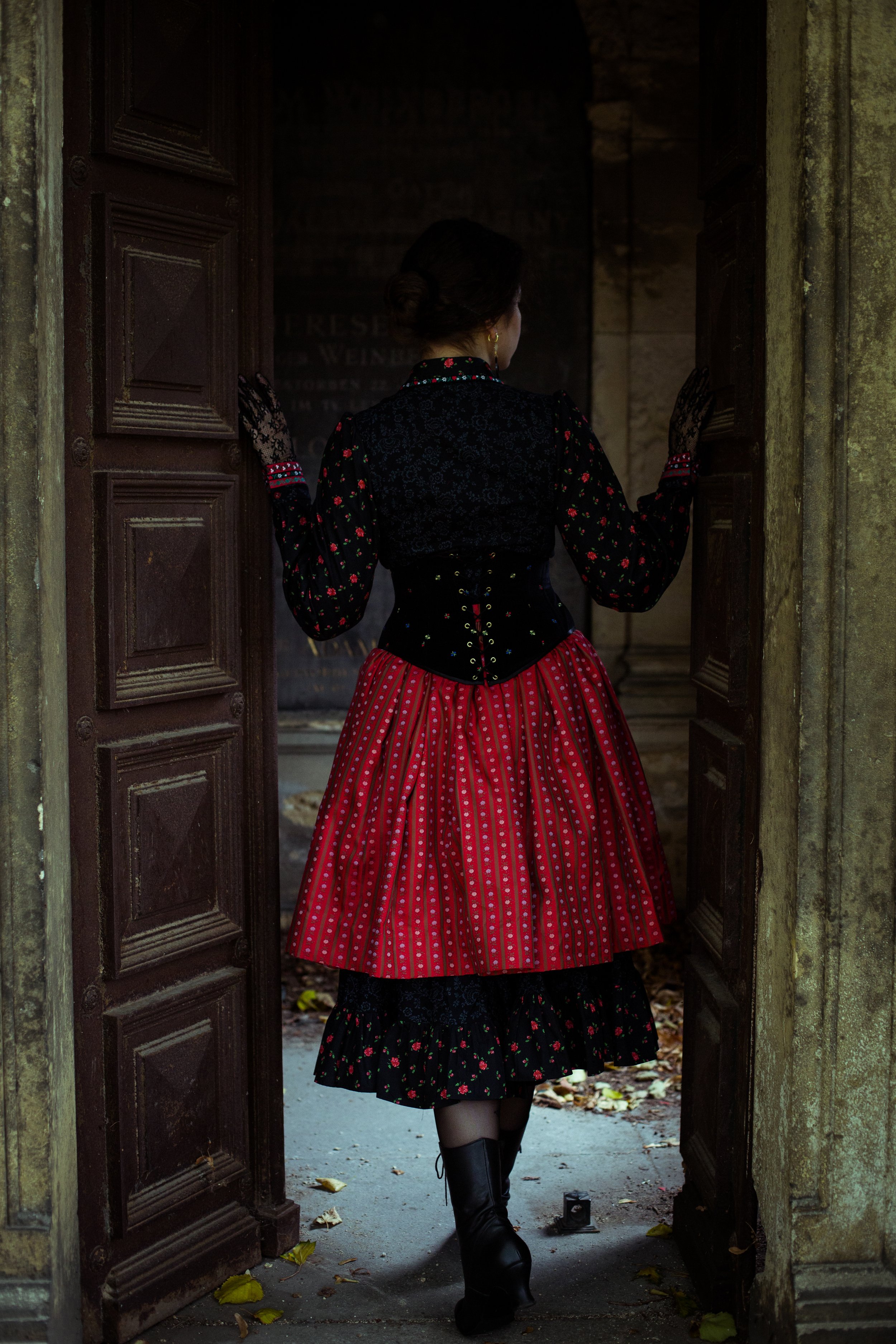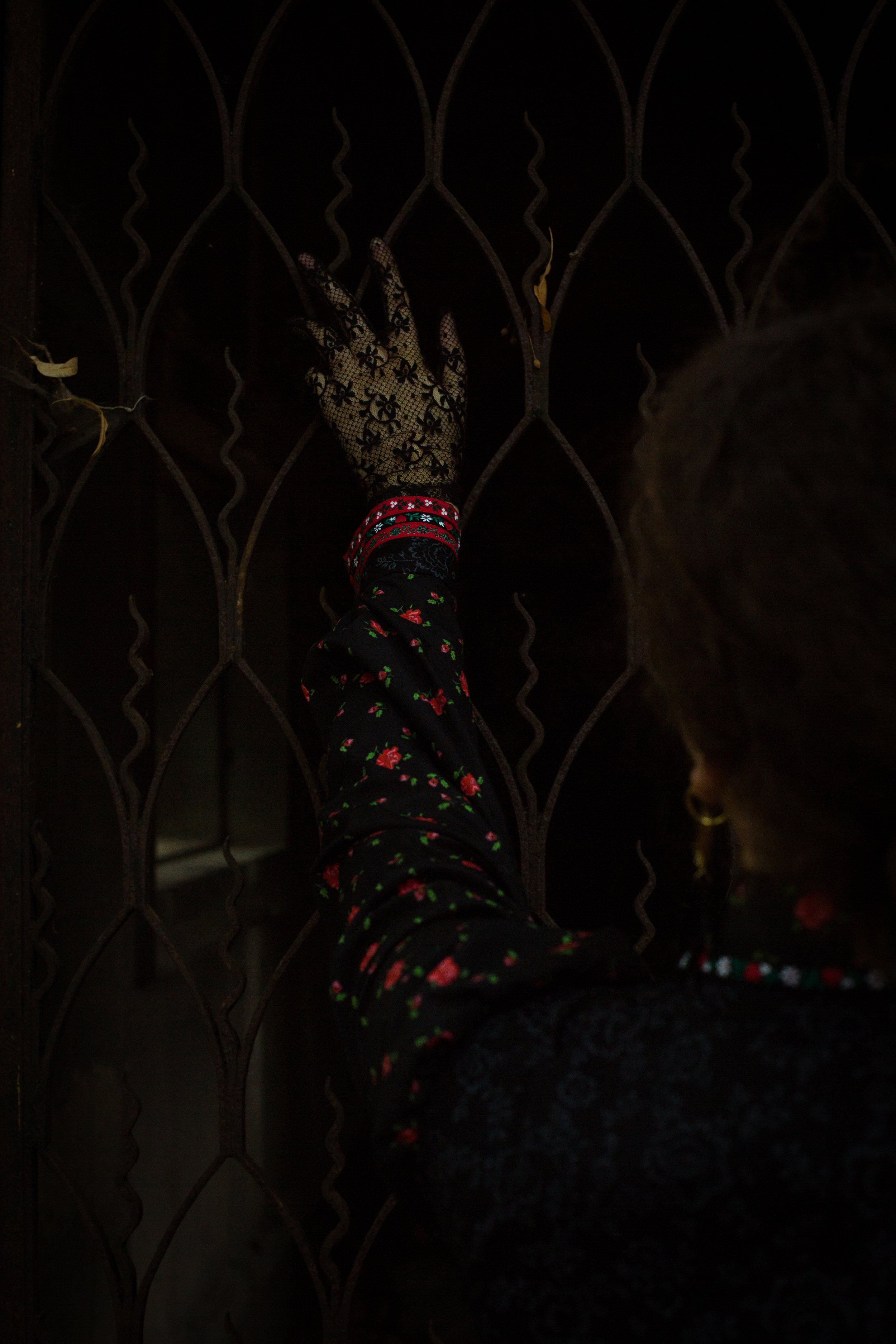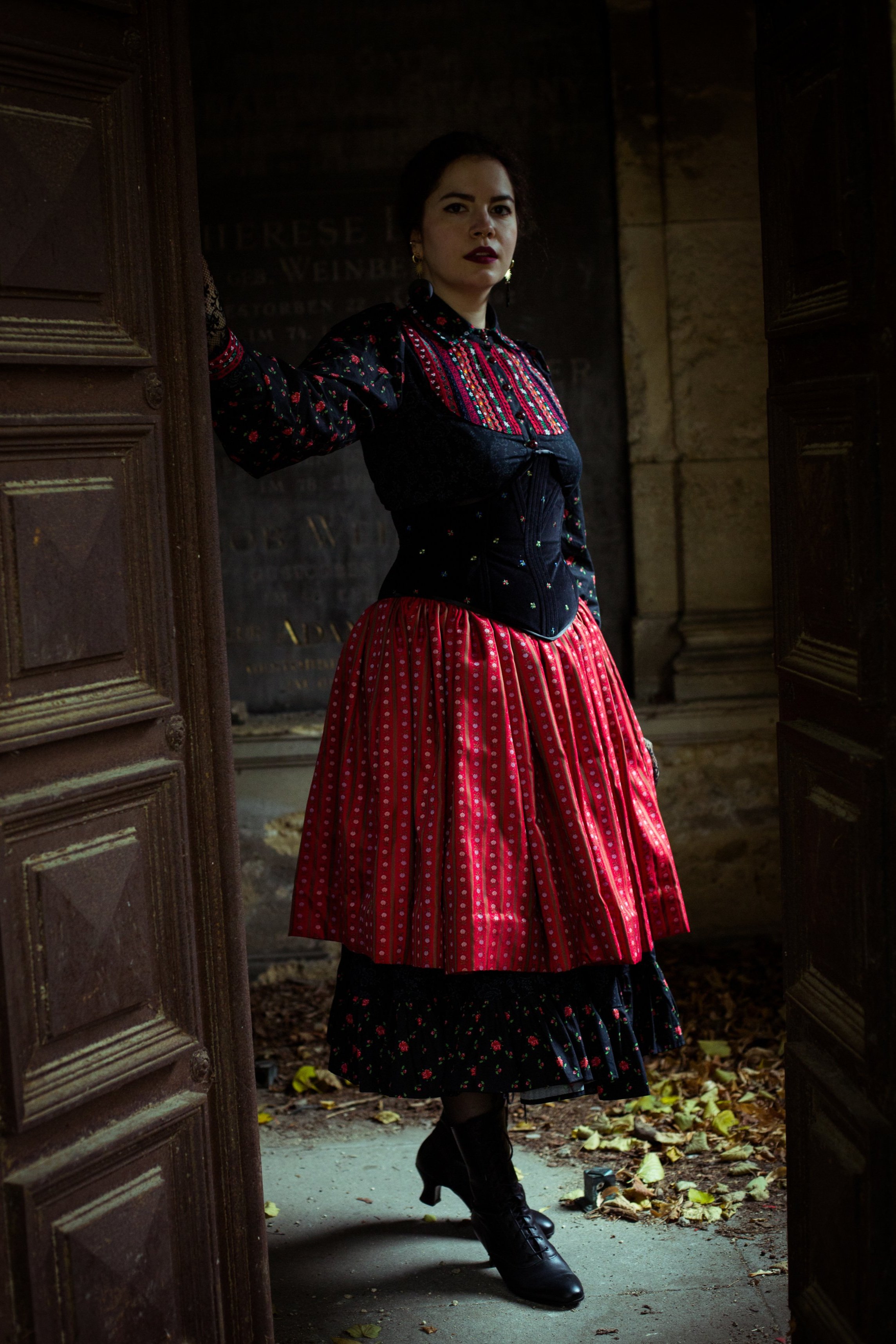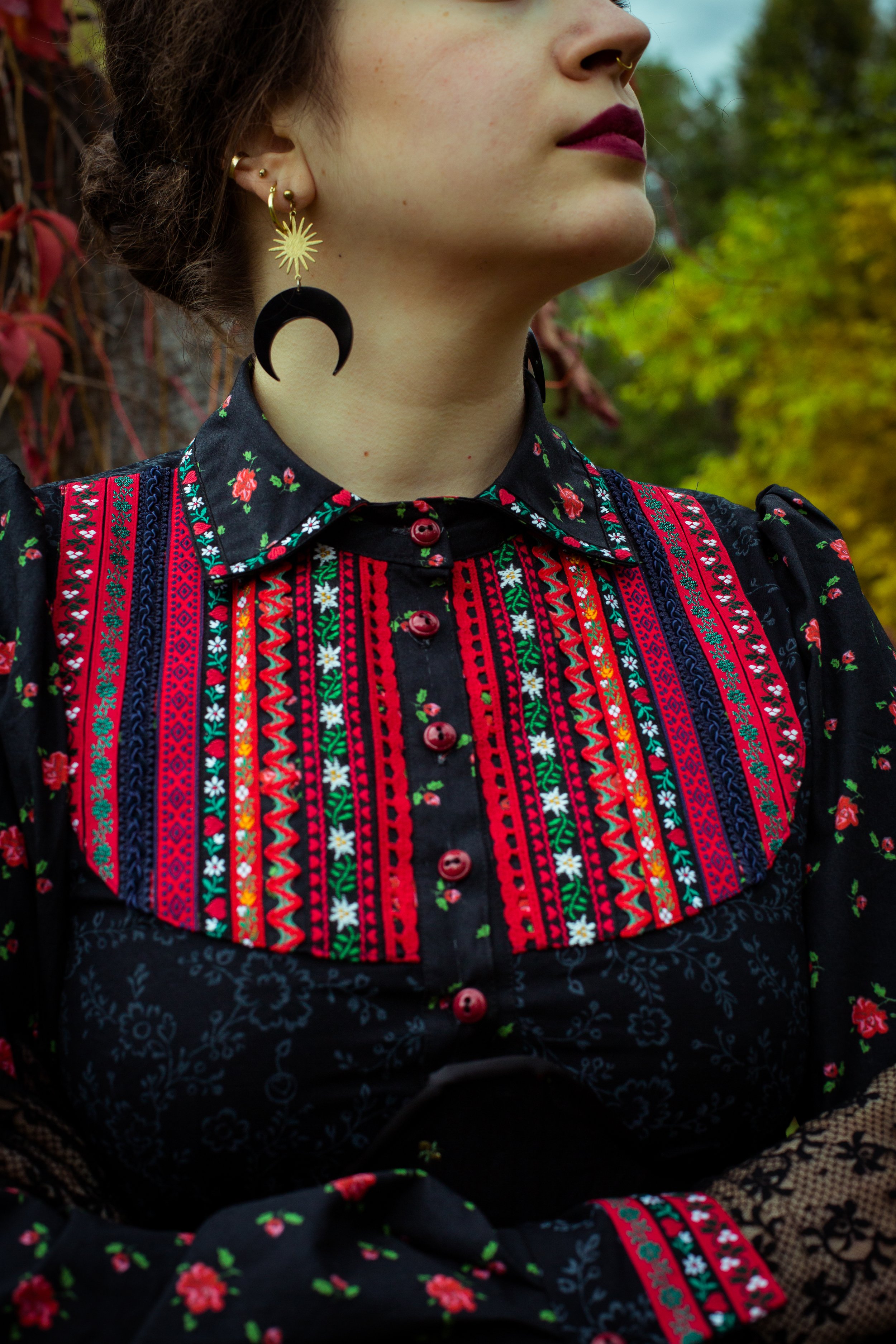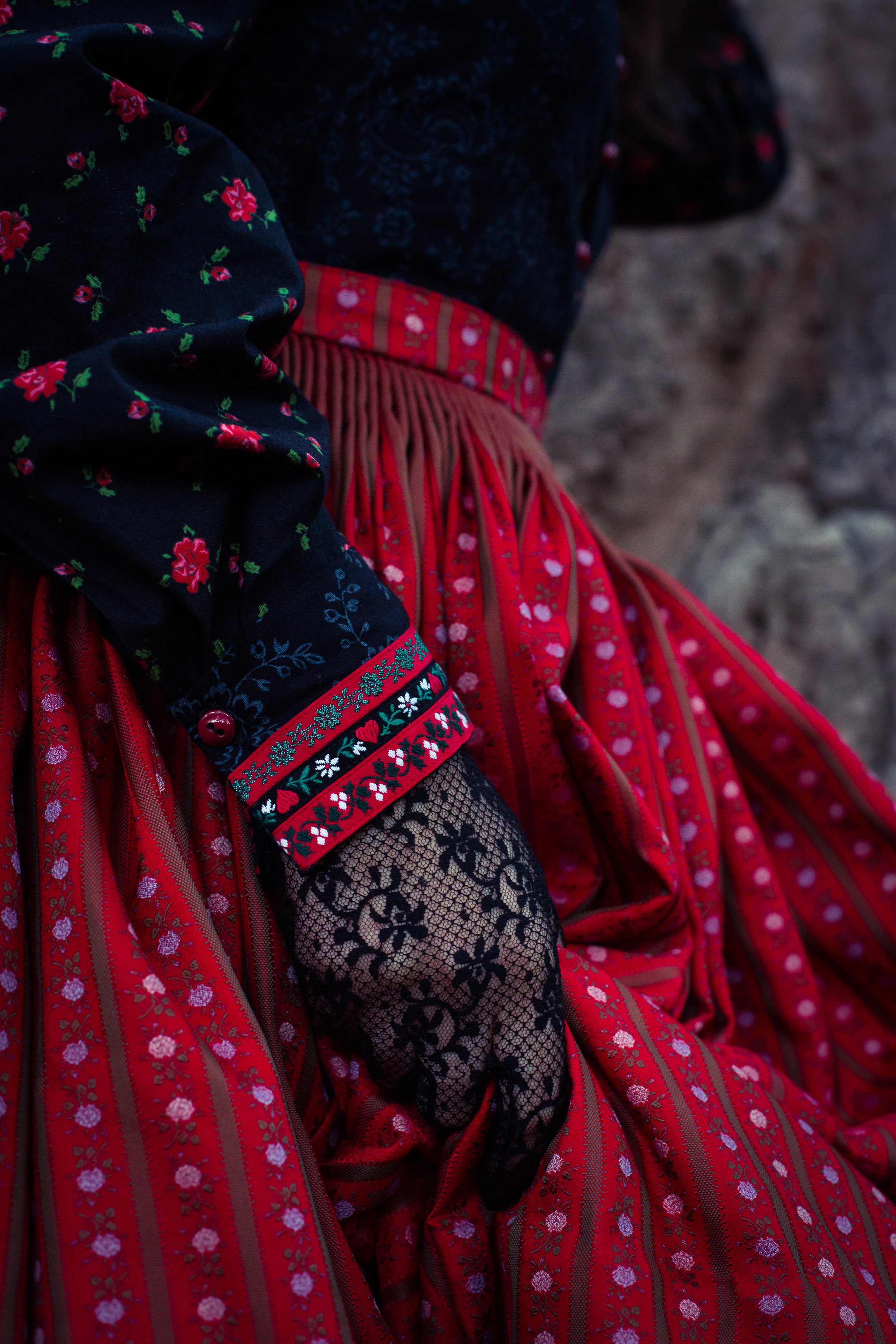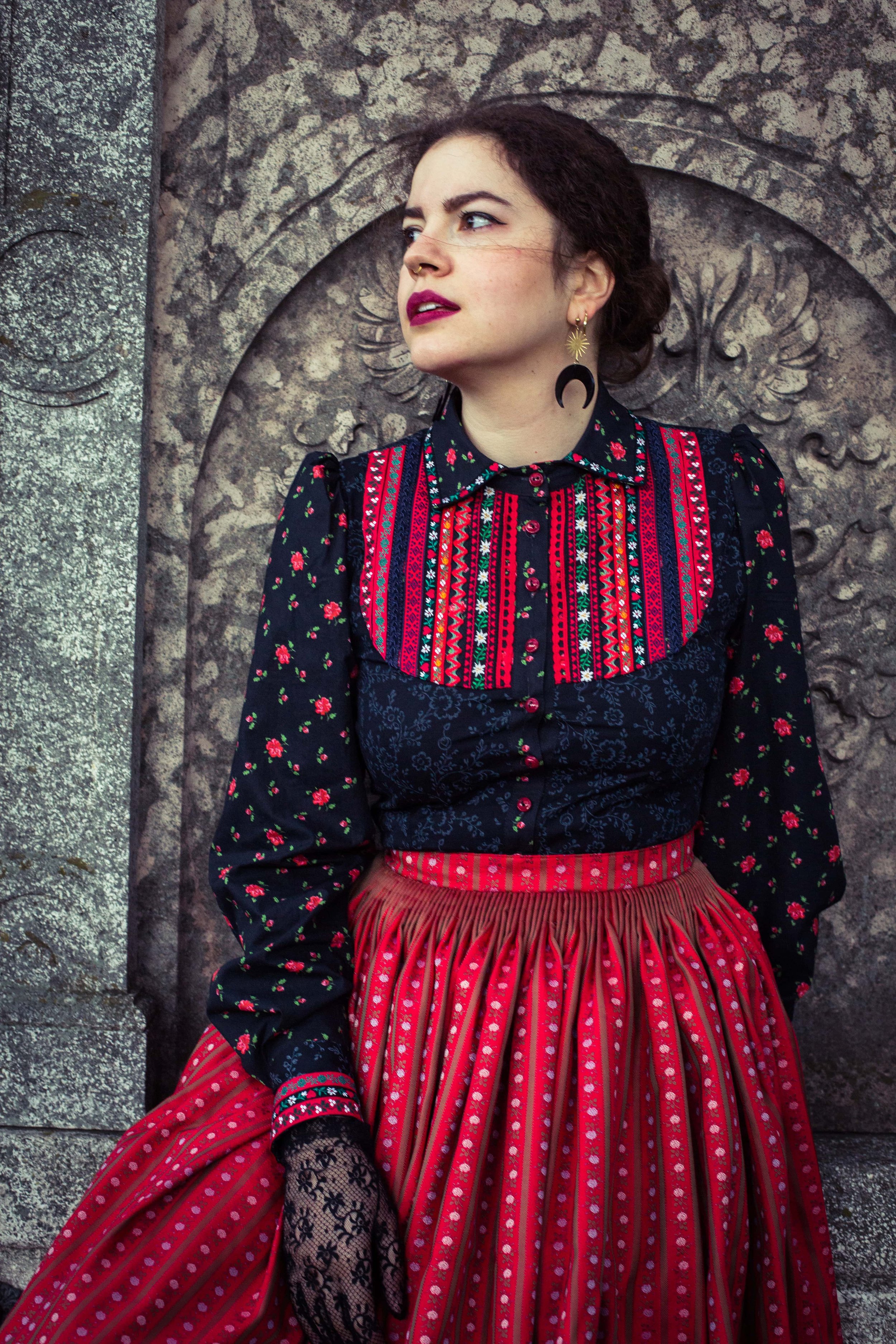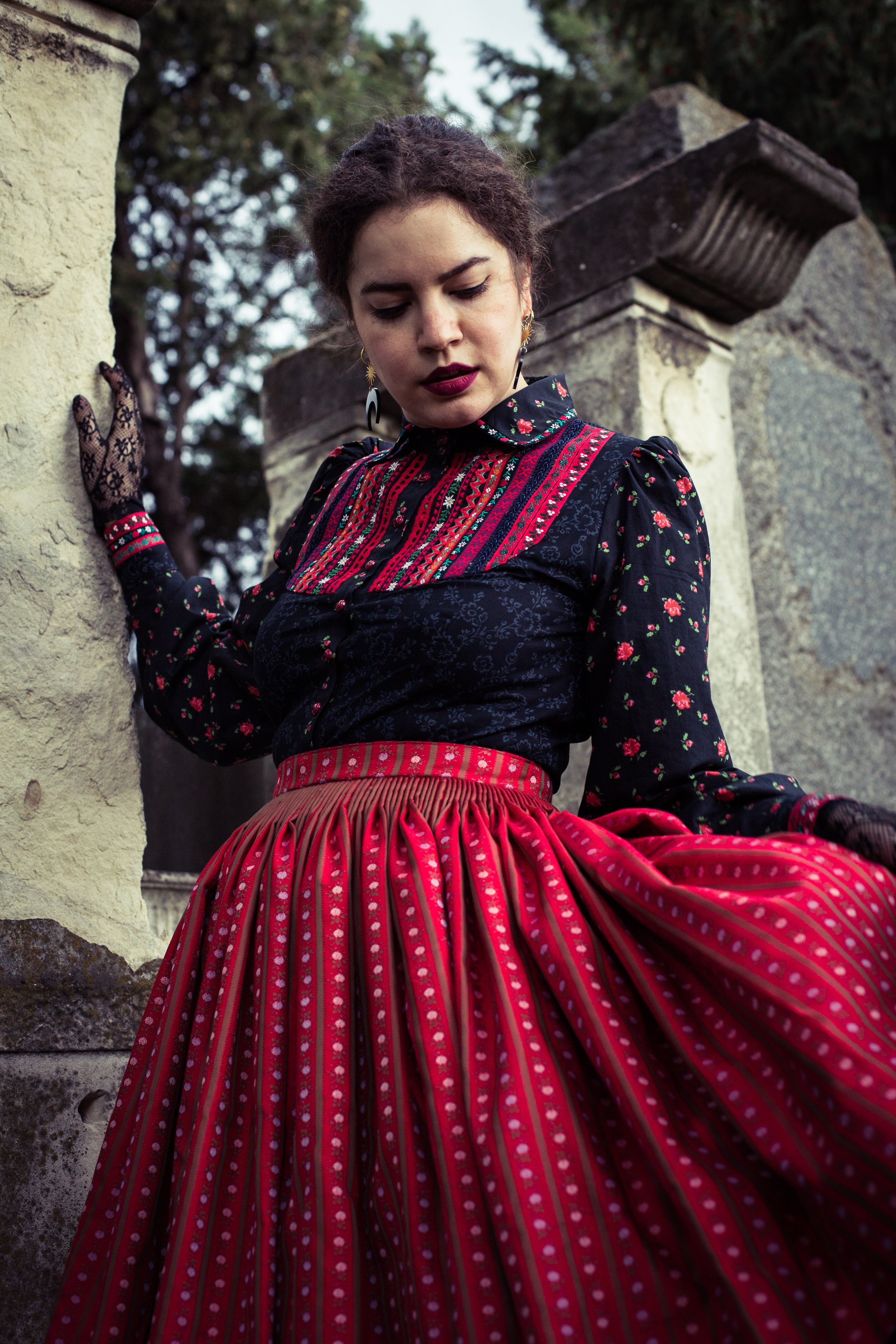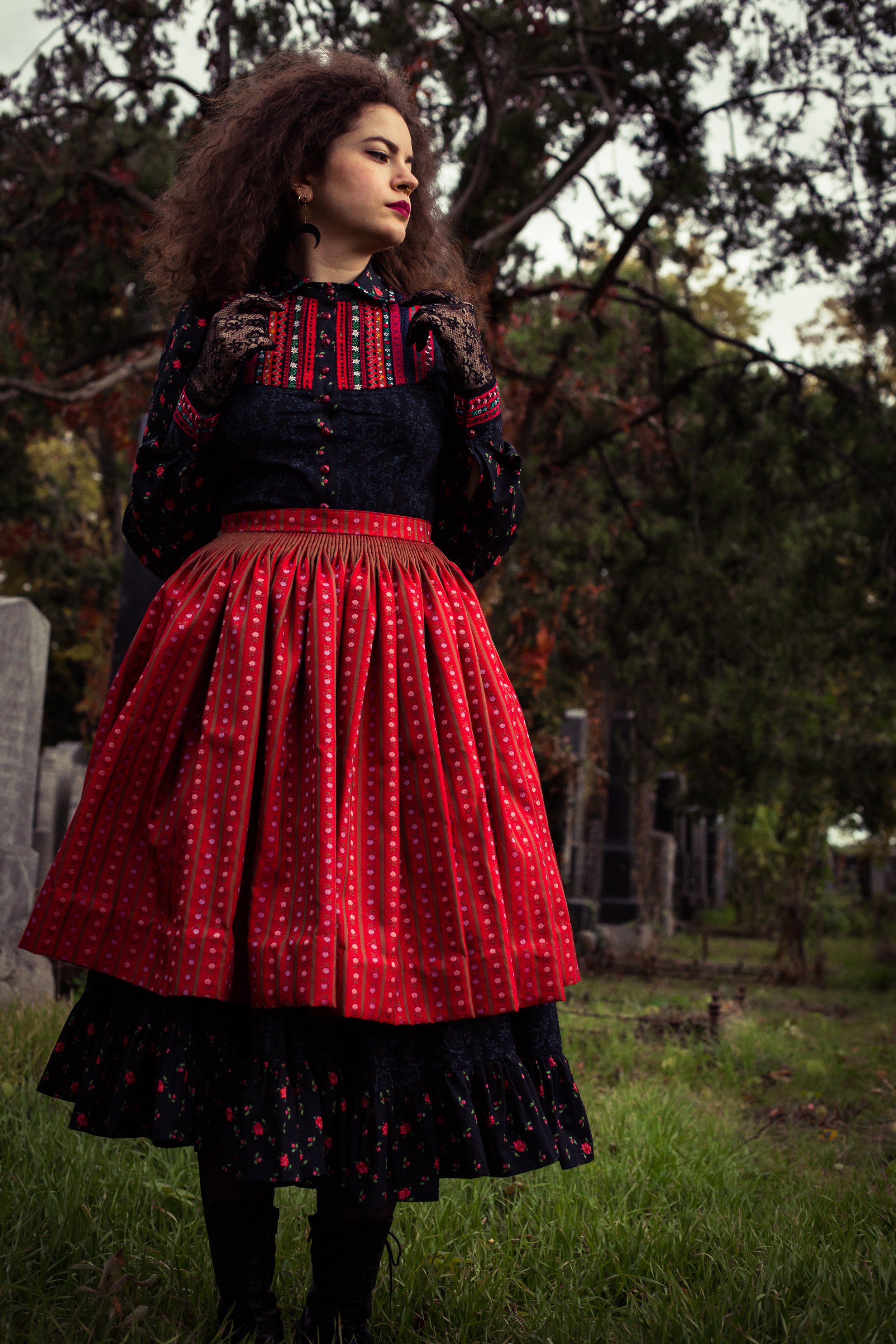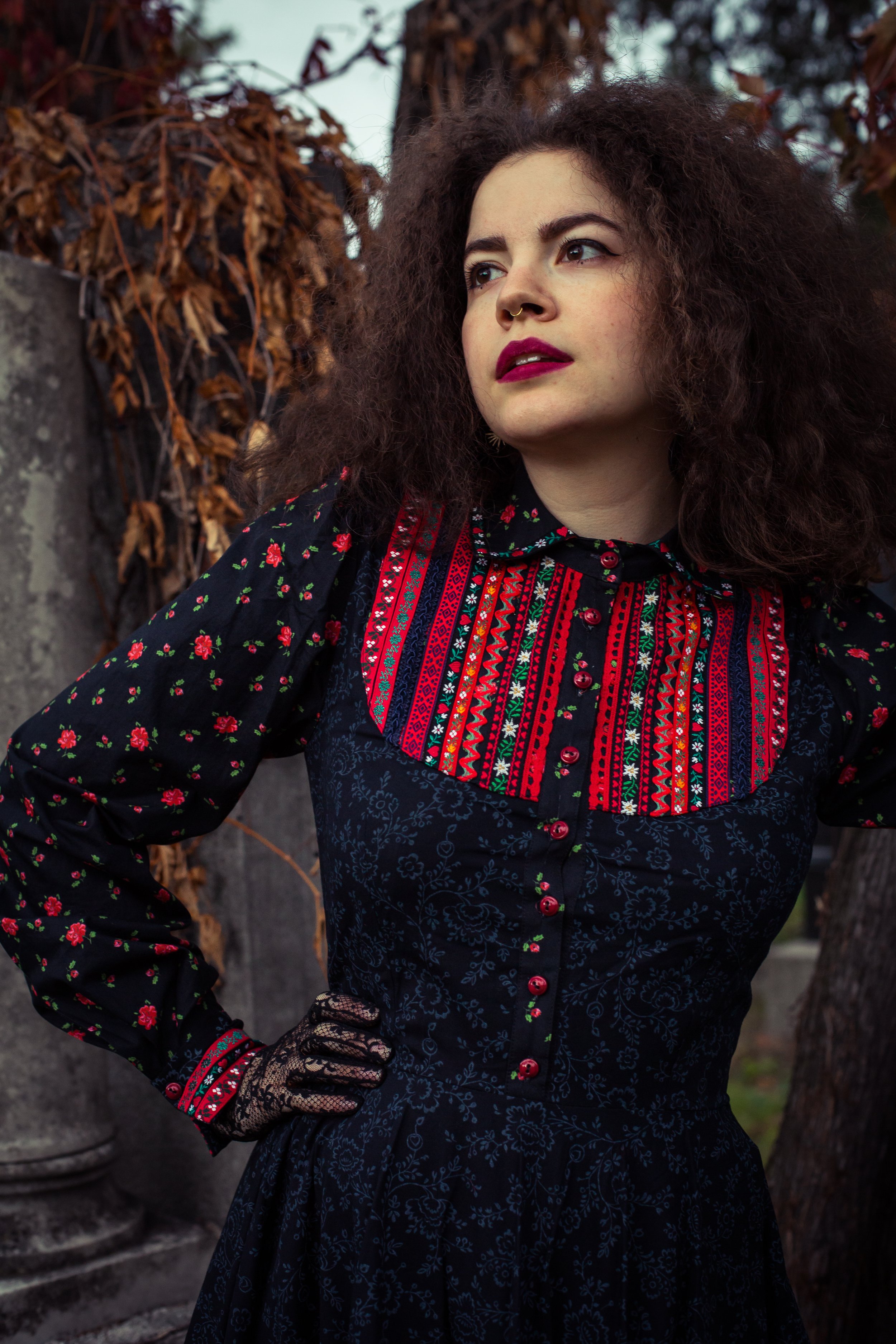samhain
dressing for the seasons of the witch
What is a witch?
Someone with a pointy hat and a broomstick? Someone who is always accompanied by a black cat and can’t keep her hands from potions and poisons?
The witch has been around for millennia, and her image changed with time. Once she was a devil-worshipping outcast who needed to be punished with death, then an ill-wishing old crone, who poisoned little princesses and was the antagonist of many a fairytale. Later, her magickal abilities were romanticized and she ultimately ended up becoming a powerful icon for the feminist movement.
Personally, I have been drawn to witches for quite some time now. They intrigue and fascinate me and so I was wondering - how does ‘a witch’ look like for me? Whom do I associate with that word, how do I imagine the person behind it? What is my personal, typical witch - and what does she wear?
I want to explore this idea throughout the coming year - presenting a new version of my ideal witch every three months, always at a witch’s holiday: Imbolc, Beltane, Lammas and of course Samhain, the Witch’s New Year: When the veil between the worlds is at its most sheer.
A new year sounds like the right opportunity to start something new, so this is why I am presenting you this first incarnation today.
For Samhain, I chose to look at my initial witchly inspirations - My immediate associations, my cultural upbringing and my current interests in all things magick. Things that came to mind were the classic colours (red and black) and a strong connection to lore and folktales of the Alps. My witch is powerful, eclectic, beautiful, practical and not someone, who small children have to fear (Men should probably be careful though).
My starting points were the aforementioned colours and the traditional clothing of the Austrian Alps.
The main dress features a simple shape, with a ruffled circle skirt and a ribboned bib ( a subtle nod to a recognized Austrian Designer). The skirt is like a classic Dirndl skirt: Hand-pulled cartridge pleats, which condensed the 5m of fabric onto the 70cm waistband. The fabric is a floral brocade and its stripes create a striking effect with the pleating.
Lastly, the underbust corset: It pulls everything together and makes the look complete. I love how the corset changes the silhouette slightly and perfectly complements both the dress and the skirt. I am repeating myself now, but, once again, the fabric (an embroidered cotton velvet) is usually used on Dirndl bodices, so it ties in perfectly with my whole Trachten-concept.
To conclude, the look consists of three layers: The main dress, the full skirt and an underbust corset on top. It was important to me to create garments that I could wear independently and also in my day-to-day life: I am not interested in creating something too costumey, that won’t find its place and use in my wardrobe after the photoshoot.
I also like it when outfits are layered - there is more dimension and potential in a combination of garments, that a single piece often does not have. There are stories you can tell when you combine garments, stories that would never occur with just a single piece.
All images © Lukas Jahn
location: Zentralfriedhof Wien
jewelry: Soap - The Label, Makaro, We Are Flowergirls
shoes + gloves: old costume fundus pieces
The next witch will be coming on January 31/February 1.


